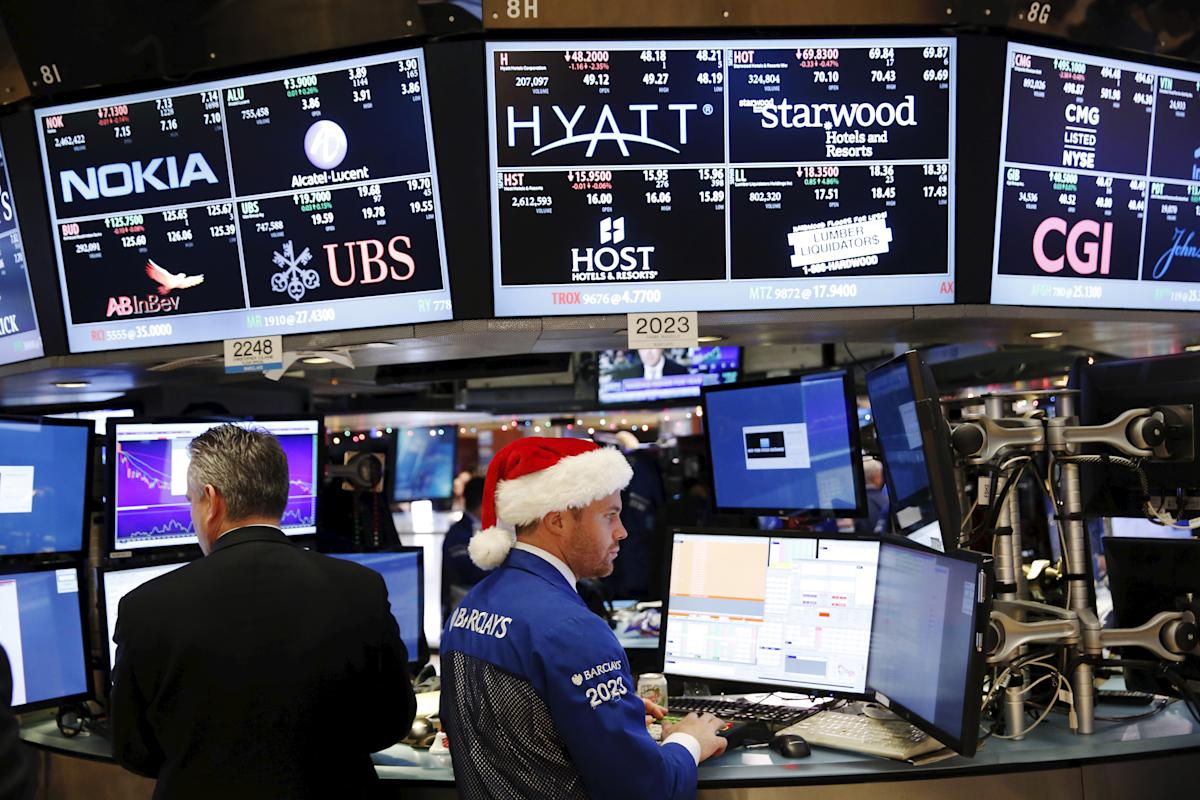Christmas may be over, but for investors, the gifts may have only just begun.
The “Santa Claus Rally” looks to send 2021 off on a high note for the stock market. The S&P 500 (^GSPC) set a record high for the second consecutive day on Tuesday, subsequently falling a bit in light of a small midday tech stock sell-off.
‘Ho, ho ho’, stocks on the rise?
The last five trading days of the year and the first two trading days of the next year together are often the biggest week of the year for the market. The 1.2% average growth in the S&P 500 over the period since 1945 is the largest of any seven-day period.
Why do these days perform so well historically? Animal spirits, as the 20th century economist John Maynard Keynes might put it, have a lot to do with the Santa Clause Rally.
“It’s [the result of] sentiment,” said Sam Stovall, chief investment strategist at CFRA Research, on the causes of the rally. “Because [investors know that] if the market does well in the month of January, then it usually does well for the full year. But if we find that a lot of money has flowed into the markets, right off the bat, then the indication is that it’s likely to be a very good year.”
Investors anticipate that the period is coming, and that equity prices are about to rise, so they are more likely to invest money to earn higher returns, Stovall explained.
Though the sentiments behind the Santa Clause Rally may appear to be begging-the-question, there is nothing mythical about its results.
According to a recent research note published by Stovall, years following a Santa Claus Rally period with a price increase, experienced an S&P 500 growth rate of 10.3%, higher than the average rate of 9.2% (since 1945).
January Barometers
Two other barometers exist for investors eager to predict the outlook for 2022’s market, both of them involving market performance during the month of January, Stovall wrote. The first five days of January are a great indicator for the rest of the month’s performance.
“The first five days offer an early warning signal as to how the market will likely perform during the entire month,” Stovall wrote in the CFRA report. “And it has done so with impressive accuracy, being correct two out of every three years for both up and down signals. What’s more, a positive showing for the equity market during the first five days of January improved the likelihood of an annual price increase by 12.8%, as well as an improvement in the FoA to 82%.”
And as the old Wall Street adage goes, ‘So goes January, so goes the year.’ The third indicator, which Stovall dubbed “the January Barometer,” draws a correlation between the performance of the market in January and the succeeding 11 months.
“Should the S&P 500 go on to record a positive performance in the entire month of January, it has historically enhanced the possibility of a positive full-year performance, as the average annual price gain rose to 15.9% and the FoA (Frequency of Advance) increased to 87%,” the report noted.
The biggest conclusion investors should draw from the barometers is that there is significant enough data to presume a causal relationship between the late December/January market performance and the larger year’s performance, Stovall said.
“Not all of the year’s price gains were concentrated in the first month of the year, as a rise for the S&P 500 in January was followed by an average 11.3% climb for the remaining 11 months of the year, with the market posting an 11-month FoA 83% of the time,” he wrote in the report.
Though January’s gains appear to set the standard for the rest of the year by setting investor attitudes and expectations, Stovall stressed that these indicators are not guarantees.
“Investors should always view history as a great guide, but never gospel,” he said. Past performance “gives a pretty strong hint of what might happen, but certainly no guarantee.”
In 2022, the market will likely encounter challenges from the ongoing COVID pandemic as well as high inflation and the Federal Reserve’s attempts to control it.
“When you think about some of the headwinds that could upset the track record of these different barometers, should they all be triggered,” Stovall said, adding the next COVID variant should be a top concern.
The Omicron variant has been the latest strain of the coronavirus to spread throughout all 50 U.S. states. Though recent research suggests that Omicron cases are less severe than previous strains of the virus, it is highly transmissible and has already had an effect on consumer demand in some industries while some remain relatively unaffected.
Secondly, the Federal Reserve has made it clear that it intends to raise interest rates in response to high inflation. Many economists expect these rate hikes to begin sometime next year.
“That’s a concern because if the Fed is too aggressive raising rates, that could throw the market into a tailspin,” Stovall said. “Also, historically, we have seen PE multiple contraction in a rising interest rate environment.”
Ihsaan Fanusie is a writer at Yahoo Finance. Follow him on Twitter @IFanusie.
Follow Yahoo Finance on Twitter, Instagram, YouTube, Facebook, Flipboard, and LinkedIn
